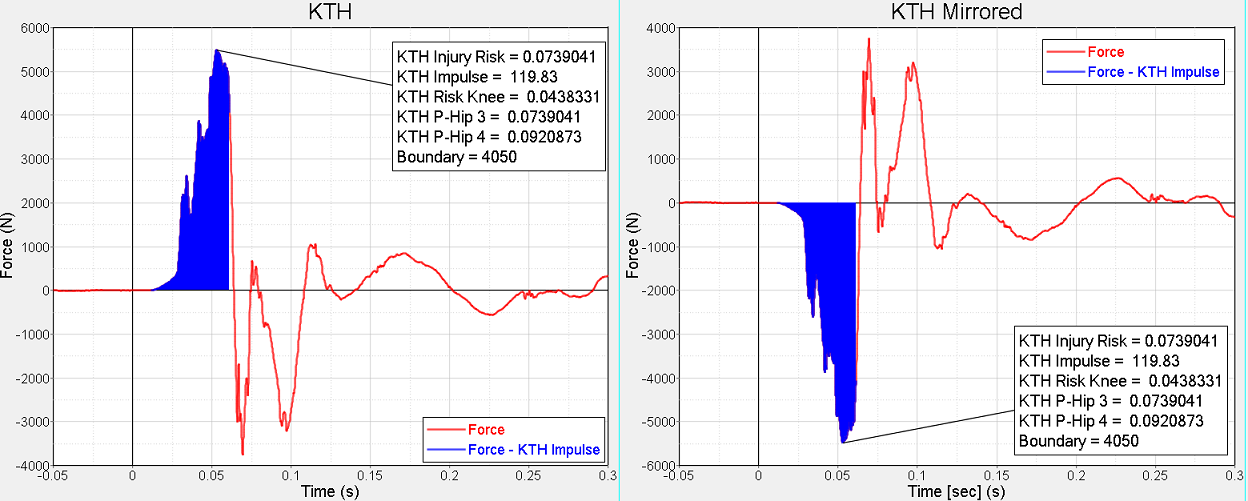kth
nee-thigh-hip injury function.
Syntax
kth(time_vector, force_vector, dummy_type, return_value, debug)
Arguments
- vector1
- The independent time vector in seconds (mandatory).
- vector2
- The dependent force vector in Newtons (mandatory).
- dummy_type
- The function accepts either strings or integers as the dummy type:
- 1 or "H3_M_50" = HIII-M50 (Default)
- 2 or "H3_F_5" = HIII-F5
Note: Double quotes must be used around strings. - return_value
- 0 = KTH (Default)
- debug
- 0 = debug off (Default)
Example
Note
Text:
KTH Injury Risk = {kth(c1.x,c1.y,1,0)}
KTH Impulse = {kth(c1.x,c1.y,1,1)}
KTH Risk Knee = {kth(c1.x,c1.y,1,4)}
KTH P-Hip 3 = {kth(c1.x,c1.y,1,5)}
KTH P-Hip 4 = {kth(c1.x,c1.y,1,6)}
Boundary = {kth(c1.x,c1.y,1,8)}KTH Impulse
Curve
X Vector: kth(c1.x,c1.y,1,2)
Vector: kth(c1.x,c1.y,1,3)Comments
kth supports a flexible number of arguments. The time and force vectors are
mandatory, and the three additional arguments are optional. When only using the two
vectors, the KTH Injury risk for the HIII Male 50% Dummy will be returned.Figure 1.



